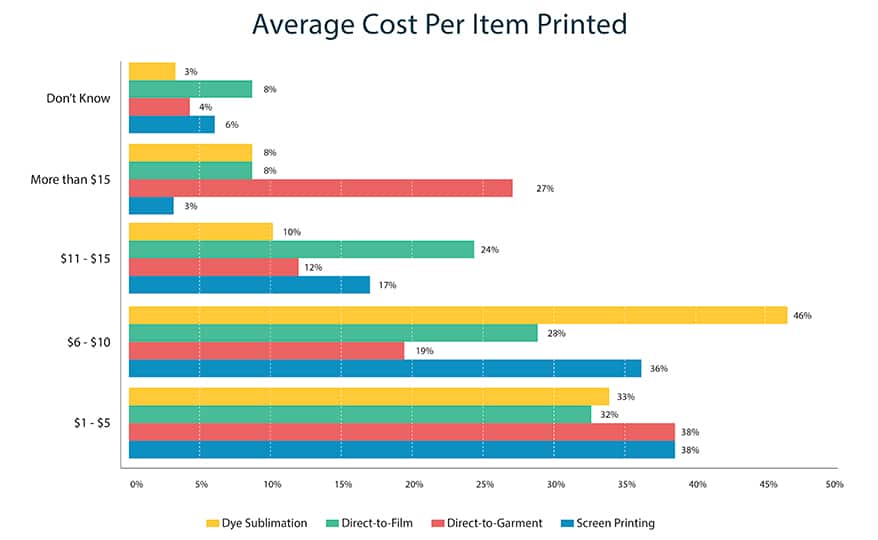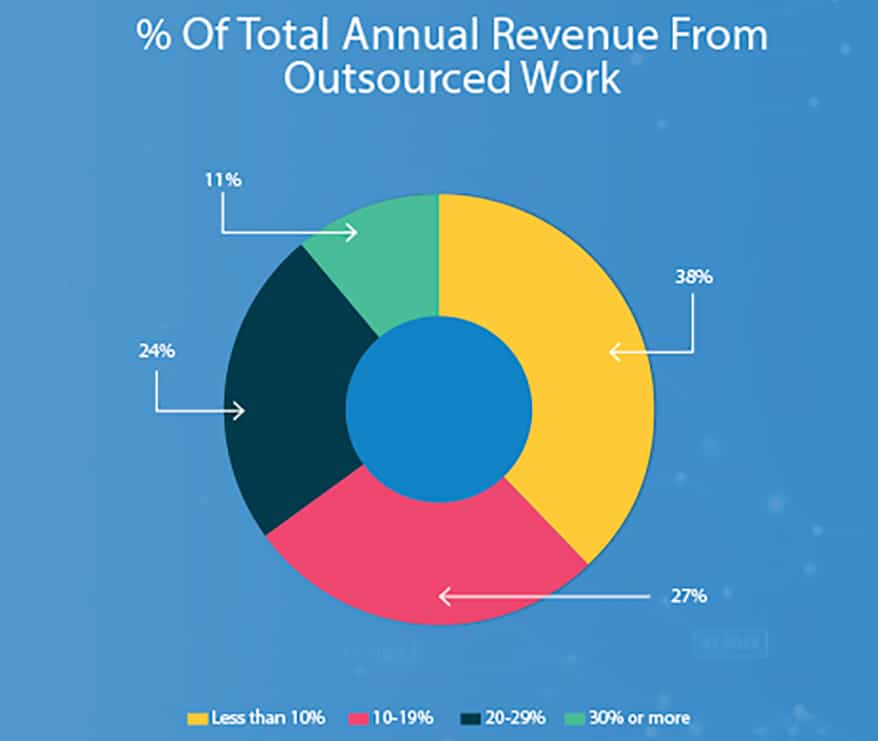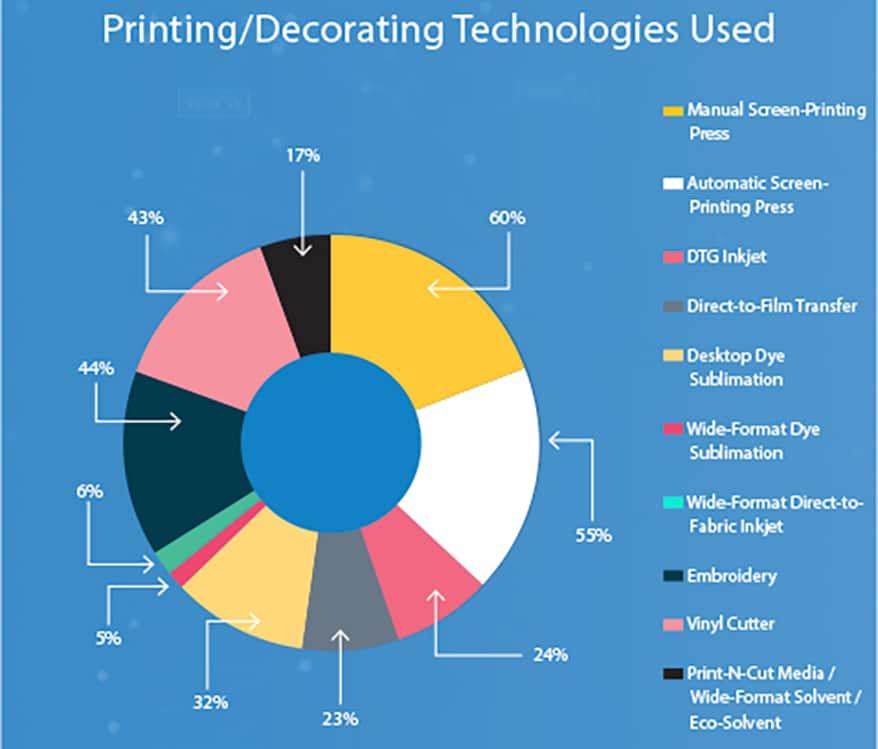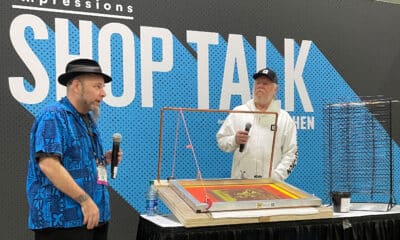
Top Ways to Fight Cut-Rate Pricing from Online Printing Giants
Independent screen printers explain how they gain their advantage.
Published
1 year agoon
S CREEN PRINTING OFTEN asks the Brain Squad for feedback on the type of content that’s shared in the magazine. A few months ago, the editorial team received this message: “The internet pricing structure has pushed margins very thin on so many items. How do we compete with online retail companies like Custom Ink, Printful, and Zazzle?”
So, we asked the Brain Squad: How do screen printers get back to better margins? Here’s what they have to say:
-
Small shops definitely have a tough time competing with the big guys like Custom Ink, Printful, and Zazzle, especially if they don’t have a lot of financial backing. But there is one area where small screen printing shops can really shine: customer service and relationships. While these big companies may have the resources to scale most aspects of their business, it’s a lot harder for them to scale feelings and personal connections. That’s where small businesses have a real advantage. By focusing on customer service and building strong relationships with clients, small screen printing shops can create value in the eyes of their customers and set themselves apart. Plus, the convenience that small businesses can offer is a major plus. — Gavin St. Georges, seps.io
- Online retail companies like Custom Ink are not as difficult because they tend to be more expensive, with inconsistent quality and the lack of someone to talk to about your order and provide expertise in making your art and product better. Many times, people who have done business with online providers become the best customers because they have something to compare us with and appreciate what we can do for them. As a manual shop getting our first auto in a couple of months, we find it more difficult to compete with the auto shops who can do the larger, better jobs so much cheaper – for example, that 1500-shirt, white-ink, front-and-back order which took me days and late nights to print that I priced at prices competitive to someone with an auto and a few hours of labor. — Charlie Vetters, Organic Robot Designs
- We push the quality factor over price. — Shannon McKinnon, Aisle6ix
- We don’t. We are in a niche market. We care about our customers. We do a lot of hand-holding. — Al Messier, Team Print
- We don’t compete with them. We sell the local buying power. I explain the value of having a local business partner that can help when they have a problem. We also do a lot to support our local schools. — Shaun McCarthy, GL Imprinting
- We focus on key clients who need quality products that are durable. We strive to educate them and remind our customers and potential customers of our quality and the ROI they’ll achieve by purchasing quality products vs. a temporary fix. Of course, that’s only relevant for clients who need longevity or superior quality. A good reputation is critical to spread the word of our worth and why people “need” to use our services. — Jessica Tillery, All Quality Graphics
- We seek to compete with them by offering a completely different experience, including better customer service and higher quality goods. — Ian Graham, Feel So Good
5 Ways to Provide Value
- SELL SERVICE
Bundle offerings to capture more marketing dollars. - CREATE COMMUNITY
Ask for referrals and testimonials for use on your social media platforms and website. - FINE-TUNE YOUR SEO
Optimize your search words for maximum regional effect. - DIVERSIFY APPLICATION OFFERINGS
Find applications others may not offer.
Create differentiators.
Focus marketing efforts on most profitable applications. - STREAMLINE/AUTOMATE WORKFLOW
Doing more with less will increase profit margins.
- Our prices are actually higher than many local competitors and lower than online giants. — Joe Sudrovic, Gorilla Joe Printing
- We can’t compete on price against these places. We work hard to highlight our strengths and focus on them. — Jim Heiser, Bullseye Activewear
-
It’s tough on the graphic side. You just have to rely on your many years of putting out a great product at a fair price and meeting your deadlines. — Robert Francis, ScreenPrintPlus
- Our flatstock markets are unique compared to textile in that demand is very high and supply relatively low. This forces clientele to be less price-sensitive, especially in the hard-deadline and top-quality work. But if I can offer any advice, it’s service above all else. Out-compete on quality, responsiveness, knowledge, helpfulness, friendliness, attention to detail, and packaging. Think of the things your client hasn’t considered, and find ways to help them succeed. — Kyle Baker, Baker Prints
- Great quality and customer service. — Charlie Taublieb, Taublieb Consulting
-
Don’t compete against someone else’s marketing model. Understand what value means to the customers you market to and over deliver. Online markets have their model; create your own that they cannot compete against. — Mark Coudray, Coudray Growth Tech

- I have watched others invest big money to try and compete in the online custom retail market only to close their doors after a few years. I just don’t see the road to profit for a low-investment mom-and-pop shop using that business model, especially here in Canada with huge geography and a small population. As a smaller independent shop, our strength is relationships, personal attention, and serving customers who are more interested in quality and good service. This is where we can outshine the massive online stores. — Matt Pierrot, GetBOLD – T-shirt Printing and Embroidery
- Quality and creativity on designs. — Luiz Enchinton, 3 Little Birdz
- We don’t compete with them. We offer so much more than an online company can. — Dan Reeve, The E. B. Wood Group
- I try to communicate in person or on the phone as much as I can. — Eric Courtemanche, Revision Screen Printing
- Customer service becomes your most important asset. Build trust. — Kristin Deutsch, Hair of the Dog Graphics
- We sell reliability and service. — Brian Geffen, Duds by Dudes
-
Don’t be afraid to raise prices. We kill the online retailers with customer service. — Ali Banholzer, Wear Your Spirit Warehouse
- We let them screw up orders and then we pick up the pieces. We have never competed on price. Customers who try to grind us are shown the door. — Andy MacDougall, MacDougall Screen Printing
- The best thing printers can do is offer superior quality and service. It’s important that print shops don’t lower their prices and margins to compete with these companies. It isn’t a sustainable practice and will do more harm to the wider industry down the line as expenses continue to rise across the board. The most important thing to do right now is capture the right kinds of clients that appreciate the quality and service you can provide. These are companies and organizations that order in bulk, value good customer service, ask questions, look for input on fashion trends, are a part of their local community, and understand the changing world and price inflation that goes with it. As long as print shops corner the market on clients like these, the online retail companies will struggle to compete. Their client base will become more of the one-off projects that printers don’t make much profit on anyway. — Alicia Borromeo, Logowear House
- We have been raising prices to be more in line with those companies. It is easy for us to complete as we actually print straight, crisp lines and clean halftones. Plus, our shirts do not feel like bulletproof vests. — John Wilhelmsen, Distinct Impression

-
Quality, service, and relationship building … no online store can do this better than you! Honestly, I have had full-color photo artwork made into shirts by Zazzle and Custom Ink … quality of one offs was poor. — Tracey Johnston-Aldworth, Traces Screen Printing
- We don’t. Those companies aren’t our competitors. We offer solutions to clients. They offer solutions for customers. Some people prefer dinner made by chefs, others are fine with McDonald’s. We aren’t McDonald’s. — Scott Garnett, King Screen
- Your question is very interesting because of what it implies. The implication is that margins are razor thin because Custom Ink is selling the same product at a very low profit margin. That assumption is 100-percent wrong! I have done extensive evaluations of Custom Ink and Rush Order Tees – just as two examples – and their prices are astronomically higher than anything we charge. Therefore, the key to success is understanding that margins on the “internet” are not necessarily thin. They are often outrageously high. The key is to pursue and ultimately to attract “the right business.” Conversations I have had with larger printers in the industry all indicate a strong intention to dump the unprofitable business of the past and pursue the far more profitable business that exists. — Larry Mays, Mays Marketing Group
- You first need to know the client you are after. Because we have higher minimums, we typically do not lose business to online sources because our pricing is usually less at higher quantity than the online suppliers. — Shawn LaFave, North Georgia Promotions
-
I feel the way to getting better margins comes down to knowing your numbers. First, you have to actually know what your numbers are and how to price accordingly for your shop’s circumstances. Second, using your numbers as a resource for selling projects to your customers can be a very effective tool. These days, if someone is reaching out to you about a project, most of the time they have done their homework and believe your company is a good option. Your job is to reinforce that belief to seal the deal. — Joe Ortinau, Ortinau Art

-
For starters, the assumption is that huge online apparel decorators such as Custom Ink, Printful, and Zazzle are everyone’s competition. That’s not entirely true. They do fantastic business but only serve a slice of the market. However, if your target market is squarely in their focus, one huge advantage you have over them is human-to-human marketing and customer service. At the end of the day, people like to do business with other people. The price someone is willing to pay for something is directly related to the perceived value they are receiving. There will always be tire-kickers and cheap people looking for the lowest price. Let your competition serve them. Instead, focus your business on solving your customer’s biggest problems with the friendliest, human-based, frictionless customer service, and you will win the day. — Marshall Atkinson, Atkinson Consulting
SPONSORED VIDEO
Let’s Talk About It
Creating a More Diverse and Inclusive Screen Printing Industry
LET’S TALK About It: Part 3 discusses how four screen printers have employed people with disabilities, why you should consider doing the same, the resources that are available, and more. Watch the live webinar, held August 16, moderated by Adrienne Palmer, editor-in-chief, Screen Printing magazine, with panelists Ali Banholzer, Amber Massey, Ryan Moor, and Jed Seifert. The multi-part series is hosted exclusively by ROQ.US and U.N.I.T.E Together. Let’s Talk About It: Part 1 focused on Black, female screen printers and can be watched here; Part 2 focused on the LGBTQ+ community and can be watched here.
You may like
Advertisement

Looking Back at the Early Years of Screen Printing: A Color Separation Showdown

Gildan Donates Surgical Equipment to Mario Catarino Rivas Hospital

INX University Expands Online Curriculum Program
Advertisement
Subscribe

Bulletins
Get the most important news and business ideas from Screen Printing magazine's news bulletin.
Advertisement
Most Popular
-

 Columns1 month ago
Columns1 month ago8 Marketing Mistakes Not to Make When Promoting Your Screen Printing Services Online
-

 Press Releases4 weeks ago
Press Releases4 weeks agoHope Harbor to Receive Donation from BlueCotton’s 2024 Mary Ruth King Award Recipient
-

 Press Releases1 month ago
Press Releases1 month agoSports Inspired Clothing Market: The Influence of Sports on Fashion Forward Looks
-

 Editor's Note1 month ago
Editor's Note1 month agoLivin’ the High Life
-

 Marshall Atkinson1 month ago
Marshall Atkinson1 month agoHow to Create a Winning Culture in Your Screen-Printing Business
-

 Case Studies1 month ago
Case Studies1 month agoScreen Printing for Texture and Depth
-

 Headlines1 month ago
Headlines1 month agoLive Poster Printing Raises $30K for Charity
-

 Headlines1 month ago
Headlines1 month ago613 Originals Takes a Unique Approach to Sales Presentation













